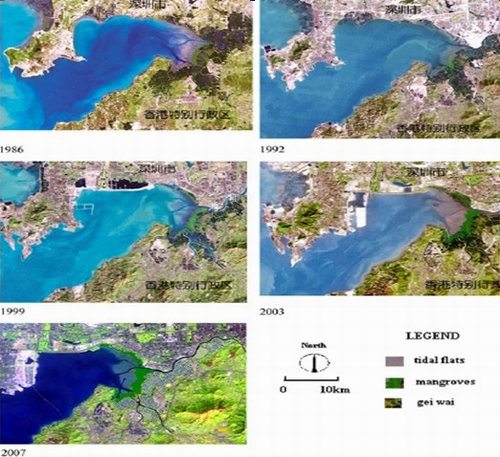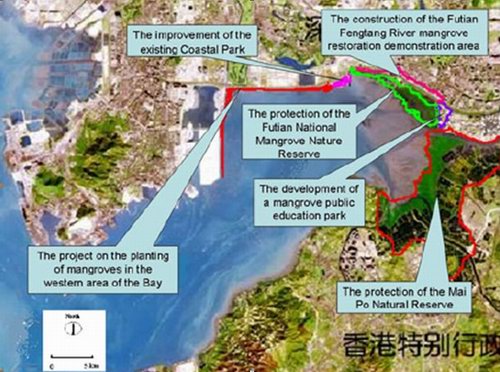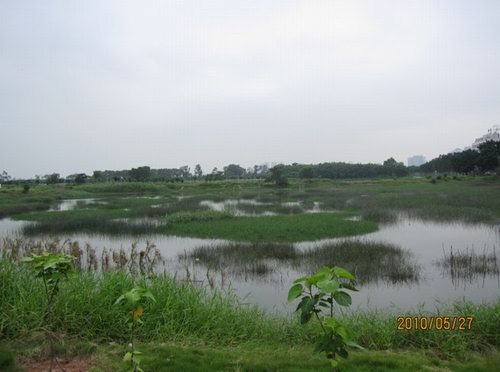SCBG Achieve New Progress in the Research of Mangrove Restoration and Urban Wetland Changes
Shenzhen Bay is located in two large, modern cities (Shenzhen and Hong Kong) on the east coast of the Pearl River Estuary. Being a stopover station and habitat of migratory birds for the north-south flyway in Eastern Hemisphere, the mangrove ecosystem in the Shenzhen Bay has extremely important ecosystem service functions. By analyzing five-phase remote-sensing images and the relevant data documents from 1986 to 2007, we found that the mangrove area in the bay has increased from 1.8 to 4.8 km2, but still has a certain disparity with its historical area, 10 km2. And the area of gei wai (fish ponds) has decreased from 36.6 to 17.2 km2 because of urbanization. Such changes in the distribution of mangroves and wetland have a serious influence on the mangrove communities and aquatic environment of Shenzhen Bay.
Dr. REN Hai and his colleagues, with vegetation and landscape ecology research group from South China Botanical Garden, investigated Shenzhen Bay recently by remote-sensing techniques and ecological restoration research. To restore ecological integrity and ecosystem health in Shenzhen Bay, six mangrove protection and restoration projects were designed and planned as follows:
1)Protection of the Mai Po Natural Reserve in Hong Kong;
2)Protection of the Futian National Mangrove Nature Reserve;
3)Construction of the Futian Fengtang River Mangrove Restoration Demonstration Area;
4)Development of a mangrove public education park (semiclosed areas);
5)Planting of mangroves in the western area of the bay; and
6)Improvement of the existing coastal park (open areas).
In the last 5 years, the Shenzhen Municipal Government has invested or will invest billions of dollars to protect wetlands and to restore degraded mangrove ecosystems in Shenzhen Bay. The Fengtang River Mangrove Restoration Demonstration Area has been almost completed and has already received high appreciation from the local government and the public.
The project was supported by the Key Supporting Project of Ministry of Science and Technology of P.R. China (2007BAC28B04), with the assistance of the Pearl River Water Resources Scientific Research Institute and the Shenzhen Aquatic Environment Research Center in Urban Construction Institute. Currently, the results of these studies have been published in the international journal Landscape and Ecological Engineering, and have been invited to report in the 4th International Ecology Urban Construction Forum.

Multitemporal TM imagery of Shenzhen Bay. Note: the scale in 2007 is different from the others, being 1:13 km
The overall planning for mangrove protection and restoration in Shenzhen Bay

Photograph of the gei wai

The transformation of Fengtang River estuary from hard ground to wetland
File Download: